71 Million years in the making
THE PERFECT GEMSTONE
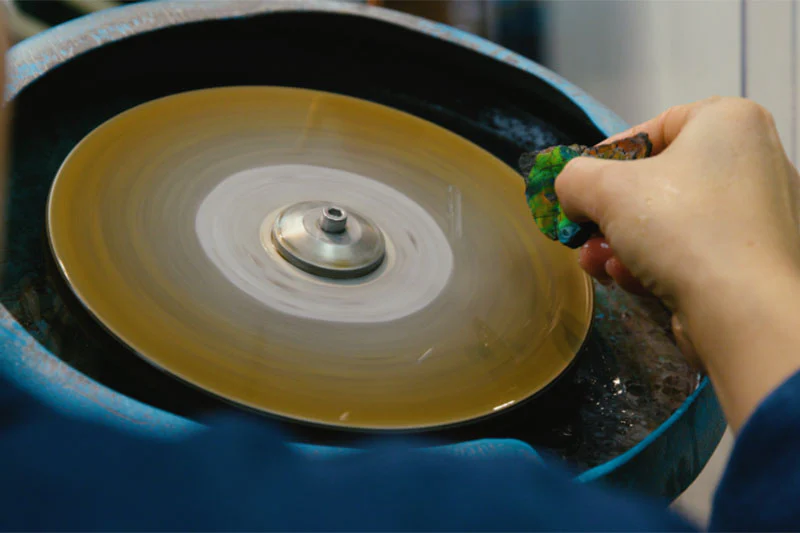
Refinement
After mining, KORITE brings the ammonite fossils and ammolite gemstone material back to their headquarters. Technicians process and preserve whole ammonites, while separately cleaning and hand cutting each ammolite gemstone to maximize the unique colour.
Jewellery & Decor
Our specialists hand craft each piece of Jewellery, carefully choosing and setting each ammolite gemstone inside every piece. Working with Canadian jewellery designers, we have created beautiful collections for you to choose from.
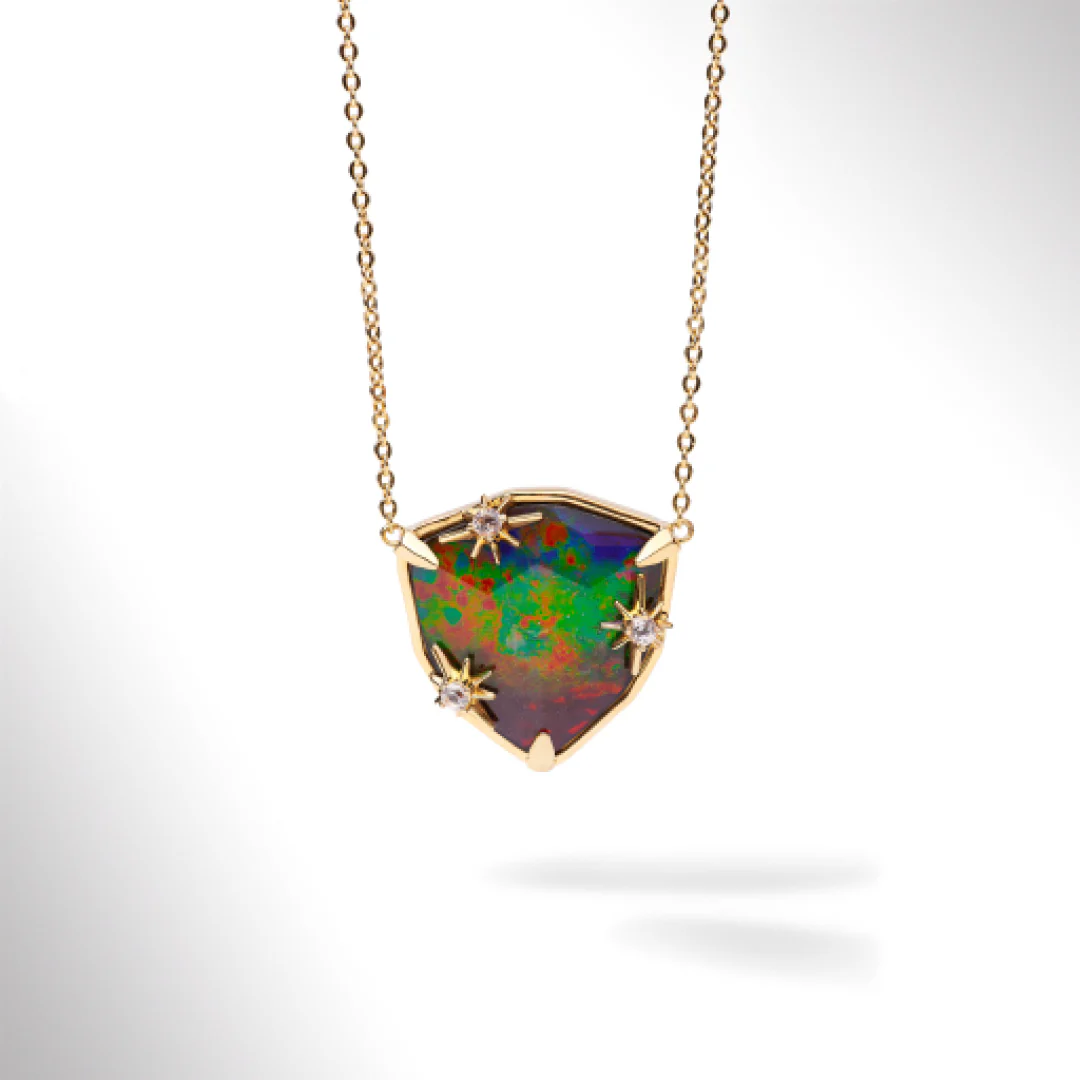
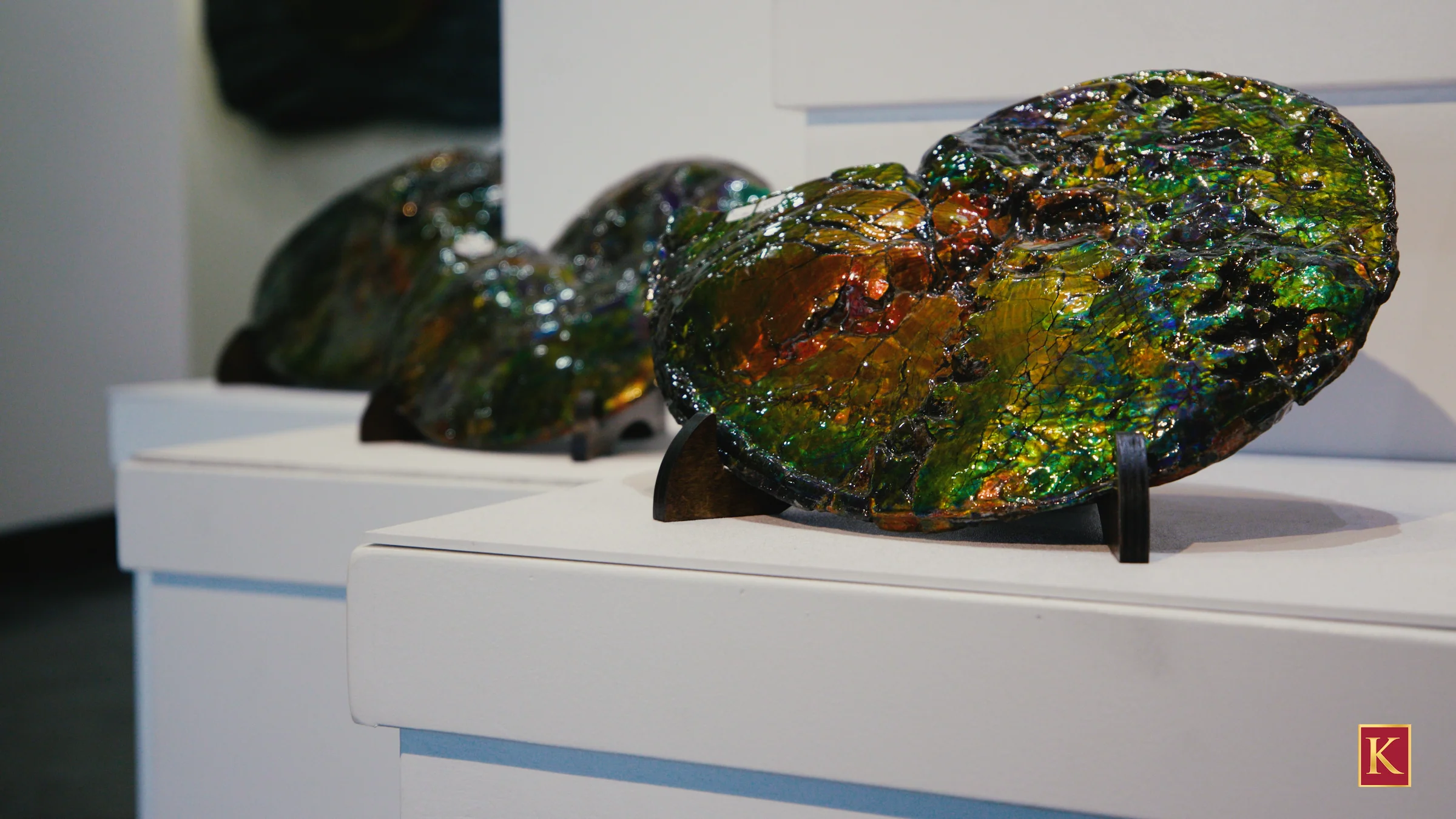
KORITE's
Ethical Mining
KORITE works closely with provincial environmental officials to ensure that the land is restored to its natural state and is improved during the reclamation process. KORITE will continue to set the Ammolite Industry standard in environmental mining practices.
Authentic KORITE ammolite is ethically mined and certified by the Federal Department of Canadian Heritage.
Canadian Ammonite Fossil Species
There are three main species of Canadian ammonite fossils which KORITE extracts from our mine in Alberta, Canada. These species are Placenticeras costatum, Placenticeras intercalare and Placenticeras meeki.
These species all vary slightly in appearance and dimensions, although the rarest and most desirable species is Placenticeras intercalare, which displays distinctive ‘horns’ that spiral along the surface of the ammonite fossil. These formations allow for unique and truly special surface texturing that is unlike the smooth, flat texture of other Canadian ammonite species.
The size of Canadian ammonite fossils can vary greatly, with most falling within the range of 15 to 45 centimeters in diameter. That being said, KORITE has excavated a number of truly awe-inspiring ammonite fossils, some spanning close to a meter in diameter - the largest was approximately 87 cm!

KORITE's Ammolite Mining
There are two main zones to know about when mining Canadian ammolite and ammonite fossils. The first is the “K Zone”. The K Zone exists about 15 meters below the surface and extends 30 metres down.
Ammolite and ammonites within this layer are covered by siderite concretions and are usually cracked and fractured through deposition—these are known as “matrix lines”, which are normal to see but exist in higher concentrations within the K Zone. KORITE does not generally mine in the K Zone anymore.
Further down, roughly 20-65 meters deeper into the ground resides “Zone 4” or the “Blue Zone”. This zone is where the most high-quality ammolite gemstone material and fossils are found, and this is where KORITE sources much of our supply. In this zone, we are able to find “Sheet Ammolite” which comprises KORITE’s highest grade pieces that display many vibrant color tones.

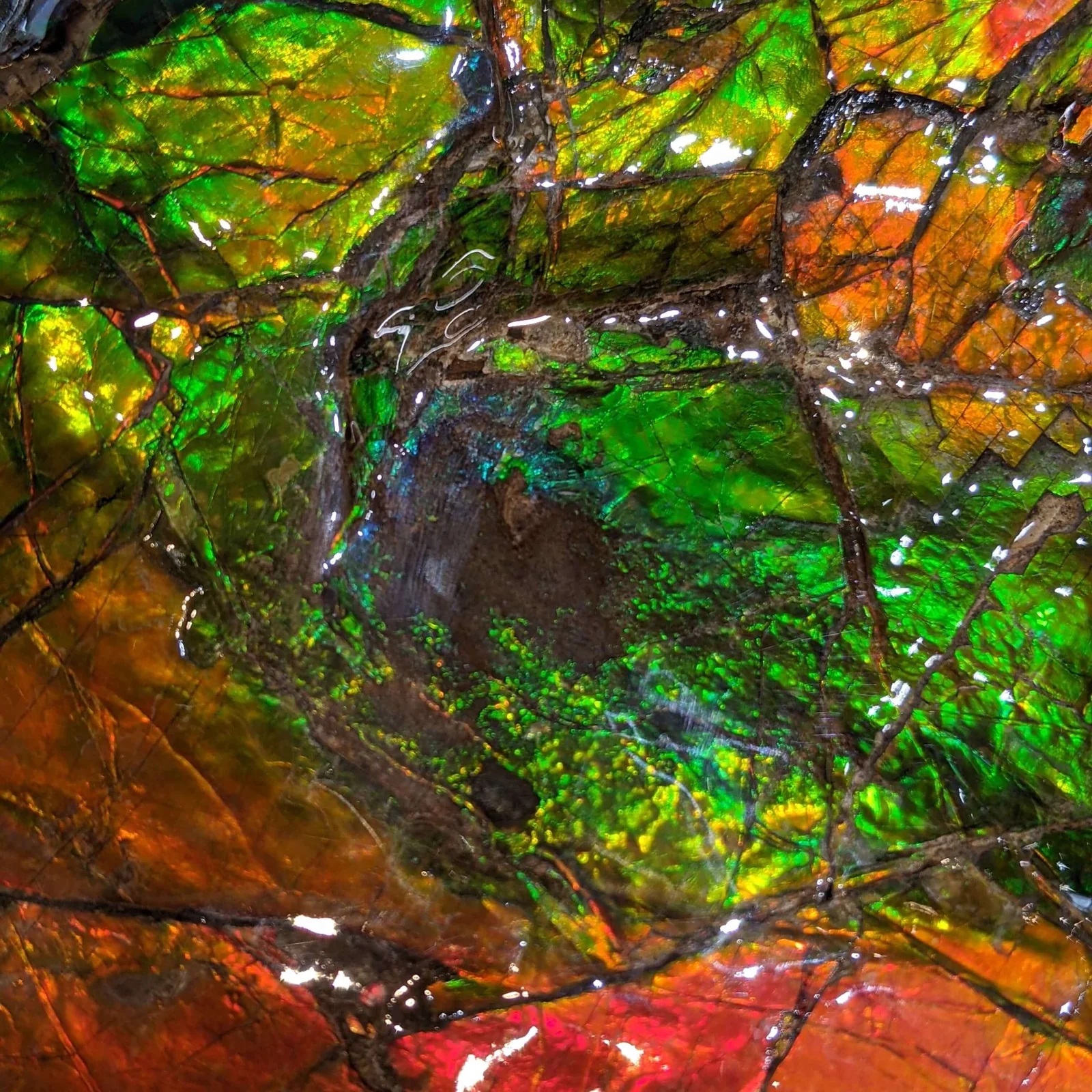
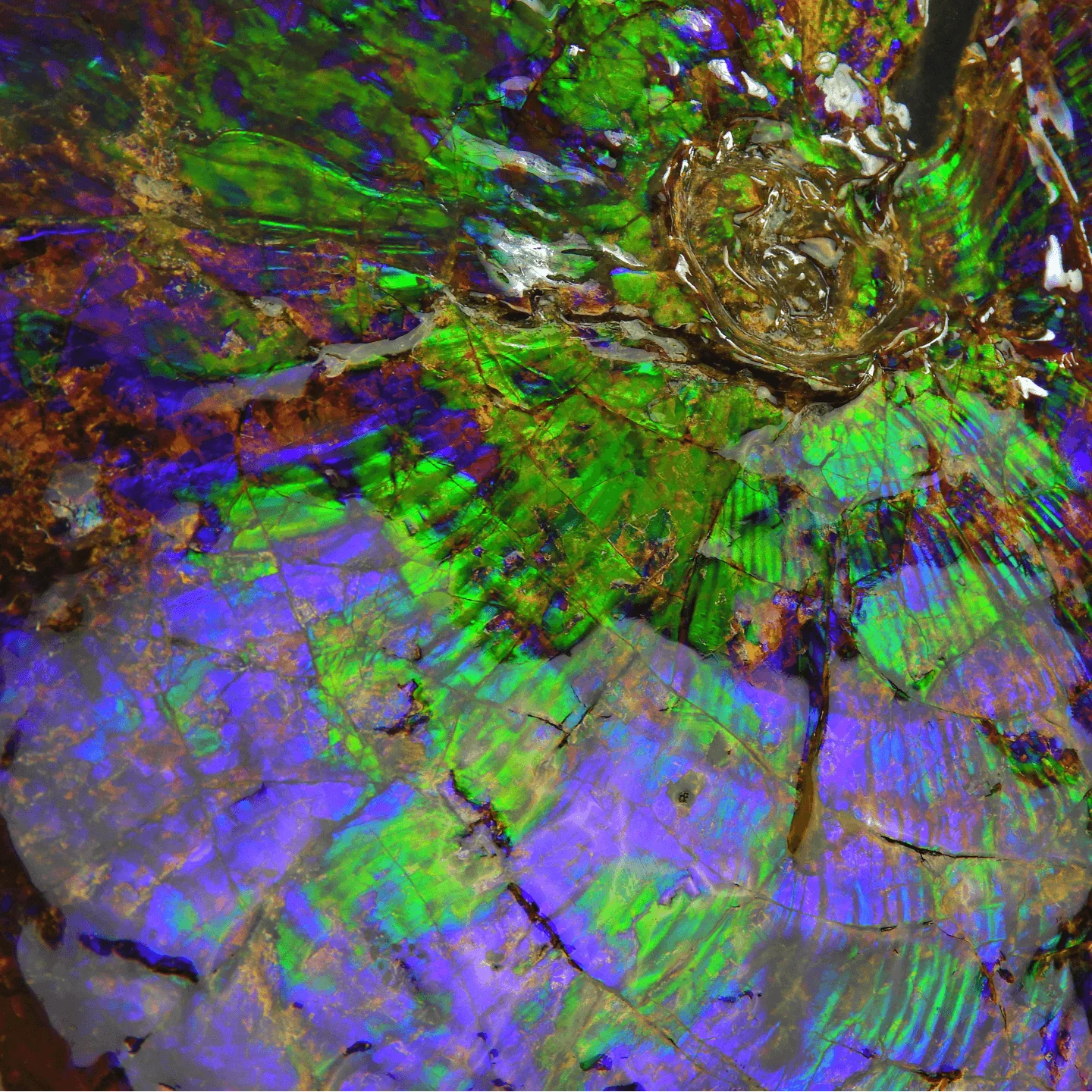
Within our mining efforts, KORITE is proud to use ethical mining practices. When a suitable site is discovered, the land is carefully excavated to allow KORITE to extract the ammolite gemstones and ammonite fossils without disturbing the nearby land. When finished, the land and mining sites are restored completely to their natural beauty.
Ammonite fossils are found on every continent, in rock formations from 400 Million to 65 Million years in age. Only in Southern Alberta, Canada however, are they found in high concentrations with the distinctly bright, beautiful and iridescent colours seen from KORITE ammolite.
This makes any Ammonite fossil with this uniquely Canadian iridescence a beautiful rarity. The range of colors visible on Canadian ammonite fossils can vary greatly, although the rarest and most elusive colors are blue, purple, and pink. These colors are a splendid and breathtaking sight to behold and command a premium in value.
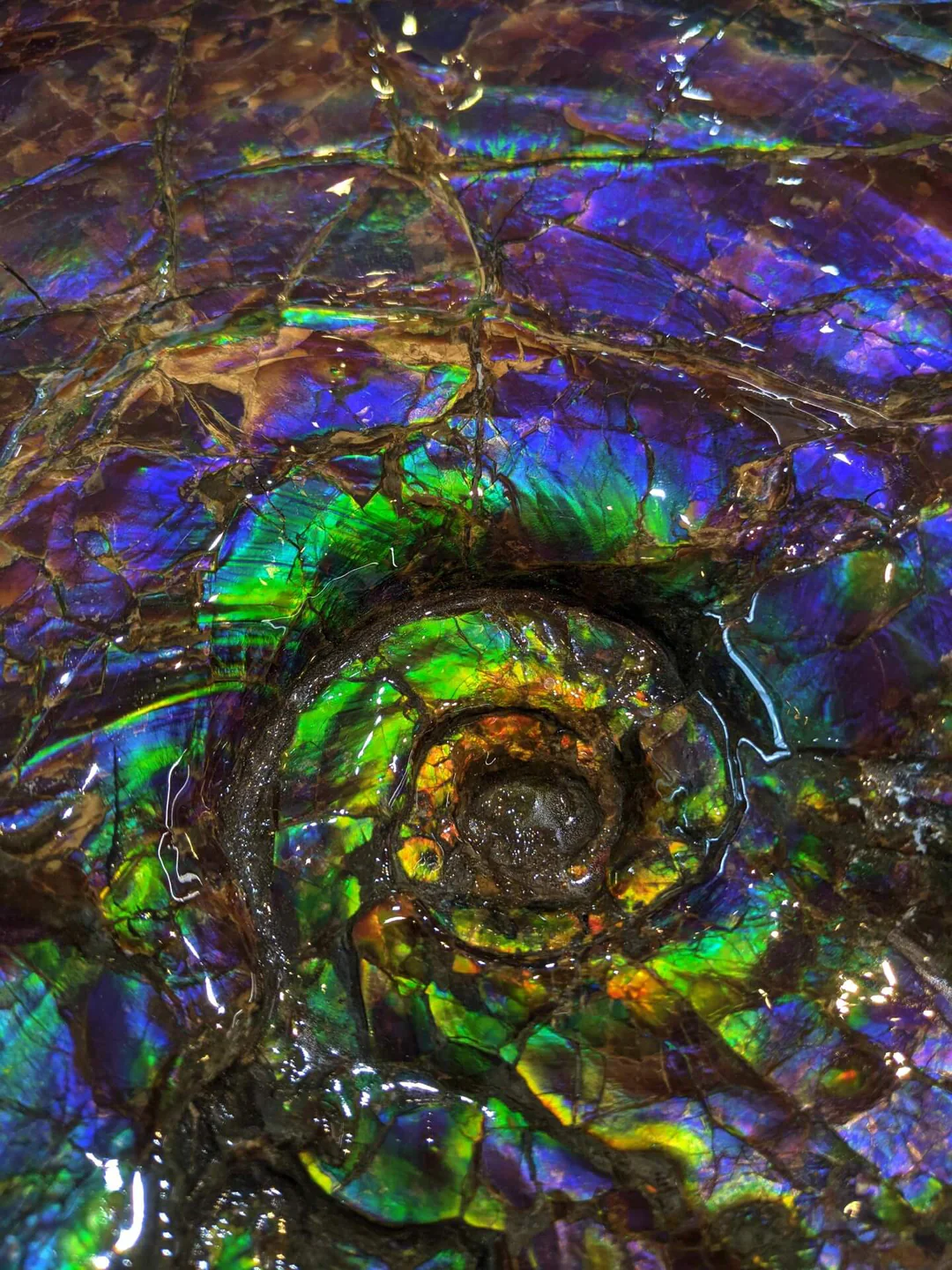

Scroll to learn more
An Elusive Mystery
There are a few rare and mysterious surface irregularities which can be seen in Canadian ammonite fossils, including rare pathologies that appear similar to elipses that some believe are bite marks.
These may have been caused by one of the ammonite’s main predators; the Mosasaur - a giant reptillian beast of a bygone era.
Bite Marks on Canadian KORITE Ammonites
In less than 10% of the ammonites Korite finds, there are perforations on the outer shell. The origins of these scars are still debated in scientific circles today. One school of thought believes that these are the bite-marks left behind from the attack of a large marine reptile named a mosasaur.
The shape of the hole scars, the alignment of these holes and the presence of compression fractures around these holes lead to the conclusion that they are the battle scars from a violent attack from this large marine predator. Modern cephalopods make up a significant portion of the diet of larger marine vertebrates and the remnants of large marine reptiles such as mosasaurs, elasmosaurs and pleisiosaurs are found associated with ammonite fossils.
In fact, six large marine reptiles have been found in the Korite mine over the last 30 years. These large marine reptile specimens now reside at the Royal Tyrrell Museum in Drumheller, Alberta.

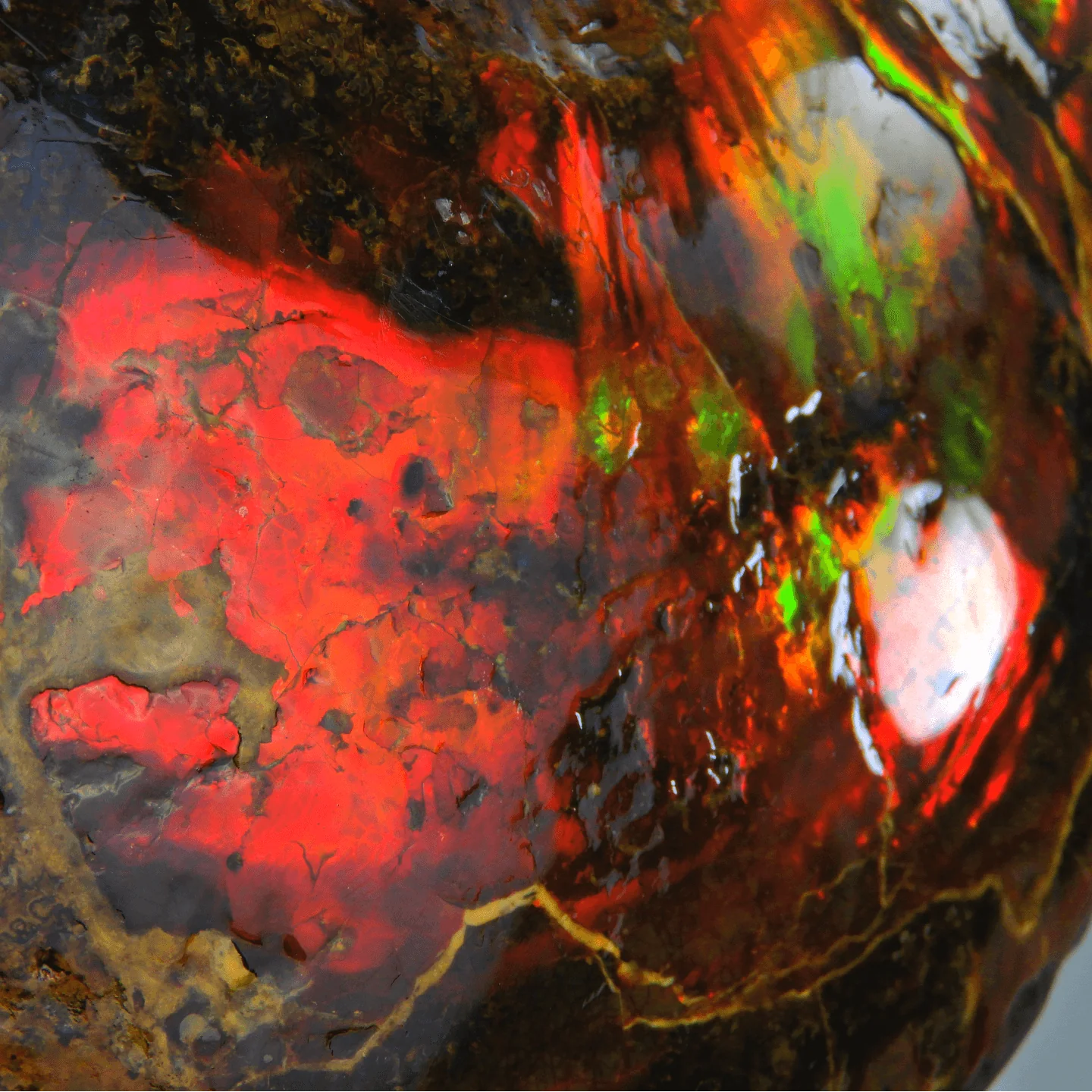
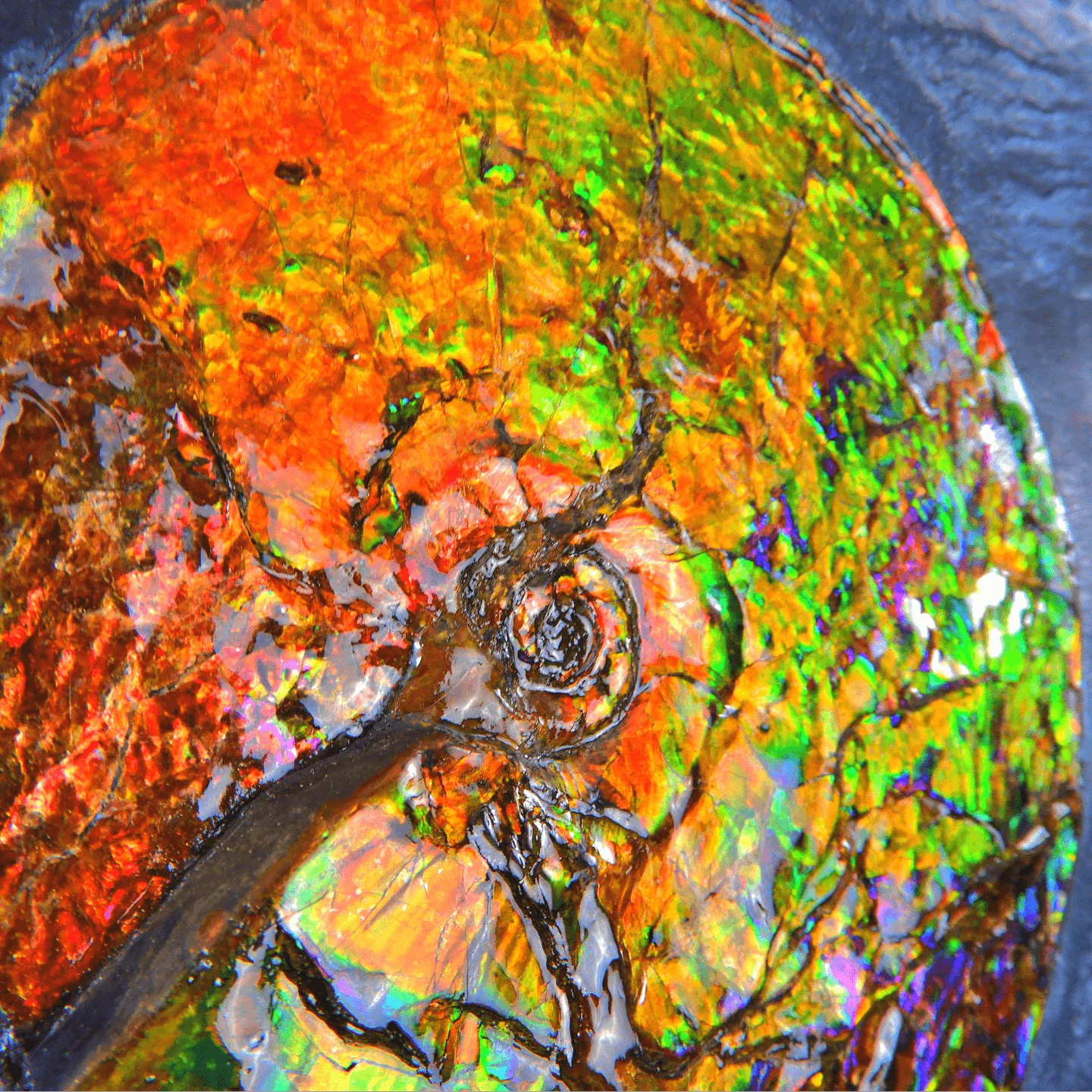
The second school of thought for these marks are that they are the homing scars left behind by a type of snail named a limpet. These marine gastropods would attach themselves to the outside of the ammonite shell much in the same manner as a barnacle attaching itself to the hull of a boat. Their radula, or raspy tongue, contained many small teeth similar to a sheet of rough sandpaper. Over time, they would bore into the outer shells of the ammonite leaving scars for us to find many years later.
Both schools of thought have merit and faults associated with them. While many of the holes can be explained by one conclusion, many cannot and support the other school of thought. Korite believes that both events happened. Either way, these amazing creatures ate many other organisms for survival and were food for many other animals both large and small; this is the circle of life.
Additionally, depending on how the ammonite fossil was buried on the deep bed of the sea floor, some chambers of the fossil may be fully formed, or caved in and flattened. These chambers are connected by what are referred to as “suture marks”, which can form any number of complex patterns and lines in between defined chambers. Scientists use the patterns and shapes found in these suture lines to identify the different species and genera of ammonite fossils.












